
Wound Ballistics Workshop
I’ve been getting quite a few questions about recommended ammunition for defensive rifles and pistols. I originally wrote this article years ago, but the information is still critically valid and will answer many folks’ questions. Read about the gelatin test session I participated in and take a look at the results. You may be surprised. - Greg
Last week I attended a wound ballistics workshop put on by a representative of ATK (the parent company of ammunition manufacturers Speer and Federal). The workshop started off with a PowerPoint program and lecture explaining the basic concepts of what happens when bullets strike bodies. The instructor then thoroughly explained the protocols for the FBI’s ballistic tests and the genesis of the testing procedures.
After the lecture, the ATK rep set up blocks of ballistic gelatin on the range and offered to let us shoot any cartridge in the Federal/Speer product line through any one of the FBI’s barrier tests. He also offered to allow us to shoot any other company’s rounds in a head to head comparison.
I’ve been to several manufacturers’ gel testing shoots before. Most are valuable, but are structured in such a way as to highlight only what the manufacturer rep wants his audience to see. Seldom do the companies allow head to head comparisons between different manufacturers.
I was like a kid in a candy store…so many bullets to shoot and so little gelatin! The ATK rep brought 10 gelatin blocks for us to shoot up. Considering the expense and hassle involved in making ballistic gelatin, we were all grateful to have the opportunity to test so many different bullets through such a large number of barriers.
Firearms instructors from the host agency (a neighboring police department) had very similar things in mind for the test. Both of our departments issue military surplus M-16 A1 rifles to the officers who don’t carry personally-owned weapons. These older rifles have a 1:12 rifling twist rate. That slow twist limits ammunition selection to shorter (and usually lighter) than optimal bullets to ensure adequate stabilization. In those rifles, most bullets weighing more than 55 grains will be highly inaccurate. We wanted to test several varieties of 55 grain rounds to find the one with the best ballistic performance.
Both of our agencies also carry the Winchester Ranger T- series rounds in our issued handguns. The Ranger T is a non-bonded handgun round that has a reputation for rapid expansion in flesh while at the same time remaining intact through intermediate barriers like auto glass. With handgun rounds, you generally get good expansion or good barrier penetration, but not both. The Ranger T seems to be one exception. It expands like a non-bonded bullet in flesh but penetrates like a bonded bullet through barriers. We are both quite happy with our current carry loads, but wanted to see if anything in the ATK line was comparable.
With these goals in mind, we focused our tests on the two most difficult barriers in the FBI’s protocols: automobile windshield glass and heavy clothing. The FBI test protocols also include bare gelatin tests, automotive sheet steel, plywood, and wallboard. We chose to focus only on the windshield glass and the heavy clothing (four layers of denim) because if bullets perform well through these difficult barriers, they usually also excel in bare gelatin or through the other media.
Rifle Rounds
We tested four different rifle rounds using both the auto glass and heavy clothing protocols. All rounds were shot (by me) from a Colt M-16 A1 with a 20″ barrel. Here are the rounds we tried:
1) Federal 55 grain bonded soft point – This has been the gold standard for 55 grain bullets since its inception. It handles almost every task well. It generally expands nicely in bare gelatin and through heavy clothing without overpenetration. It also performs very well after being shot through intermediate barriers. This one has been the issue round for the FBI, DEA, and ATF. It is currently the round that both of our agencies issue for department rifles.
We have no problems with the round’s performance, but it is quite expensive at more than $1.30 per round (even with discounted state bid pricing). It is also periodically unavailable for purchase since demand for it is so high. There have been times when I’ve had to wait as long as 16 months to get our department’s order filled.
2) Hornady 55 grain GMX hollowpoint - This round is Hornady’s latest solution to the problems created by intermediate barriers. It is a solid copper bullet without a jacket. It is supposed to expand in tissue and stay together when fired through window glass and steel. The bullet was originally designed in larger calibers to be a deep penetrating bullet for hunting big game. Hornady used the same technology in .223 to create a bullet that wouldn’t fragment when fired through glass.
3) Speer 55 grain Gold Dot bonded hollowpoint – According to the ATK rep, this bullet was created to meet the requirements set by ICE (formerly the US Border Patrol). They wanted a round that would still expand at 200 yards when fired through an 11.5 inch barreled carbine. Speer created this bullet by bonding a very thin jacket to the hollowpoint lead core. The thin jacket facilitates rapid expansion while the bonding helps keep the bullet in one piece after it travels through an intermediate barrier.
4) Hornady 60 grain TAP Urban ballistic tip hollowpoint – The Hornady TAP round is a rapidly expanding hollowpoint originally designed for varmint hunting. It has a polymer tip which is pushed back into the hollowpoint when it strikes flesh, causing a violent fragmentation.
When my agency first authorized patrol rifles in 1999, the chief was worried about overpenetrating rifle ammunition. He limited us to carrying the TAP rounds in a 55 grain weight. Over the years the TAP has had several high profile failures. The expansion is so rapid that the bullet doesn’t often penetrate deep enough to reach the target’s vital organs. It also doesn’t perform well through barriers.
We had seen ballistic tests of the 55 grain TAP and had heard that the 60 grain version might perform better. We wanted to compare it to the other rounds.
We chose to begin with the windshield glass test first. We shot each of the rounds through a piece of windshield glass at a distance of about 35 feet. The gelatin behind the glass was covered with a single layer of cotton t-shirt material.
Here were the results:
55 grain Federal Bonded SP
Penetration: 16″
Recovered Diameter (largest): .345
Recovered Weight: 30.7 grains (56% retention)
55 grain Hornady GMX HP
Penetration: 15.5″
Recovered Diameter (largest): .357
Recovered Weight: 38.3 grains (70% retention)
55 grain Speer Gold Dot HP
Penetration: 6.5″
Recovered Diameter (largest): fragmented
Recovered Weight: fragmented- pieces too small to recover
60 grain Hornady TAP Urban
Penetration: 4.5″
Recovered Diameter (largest): fragmented
Recovered Weight: fragmented- largest piece was 12.8 grains
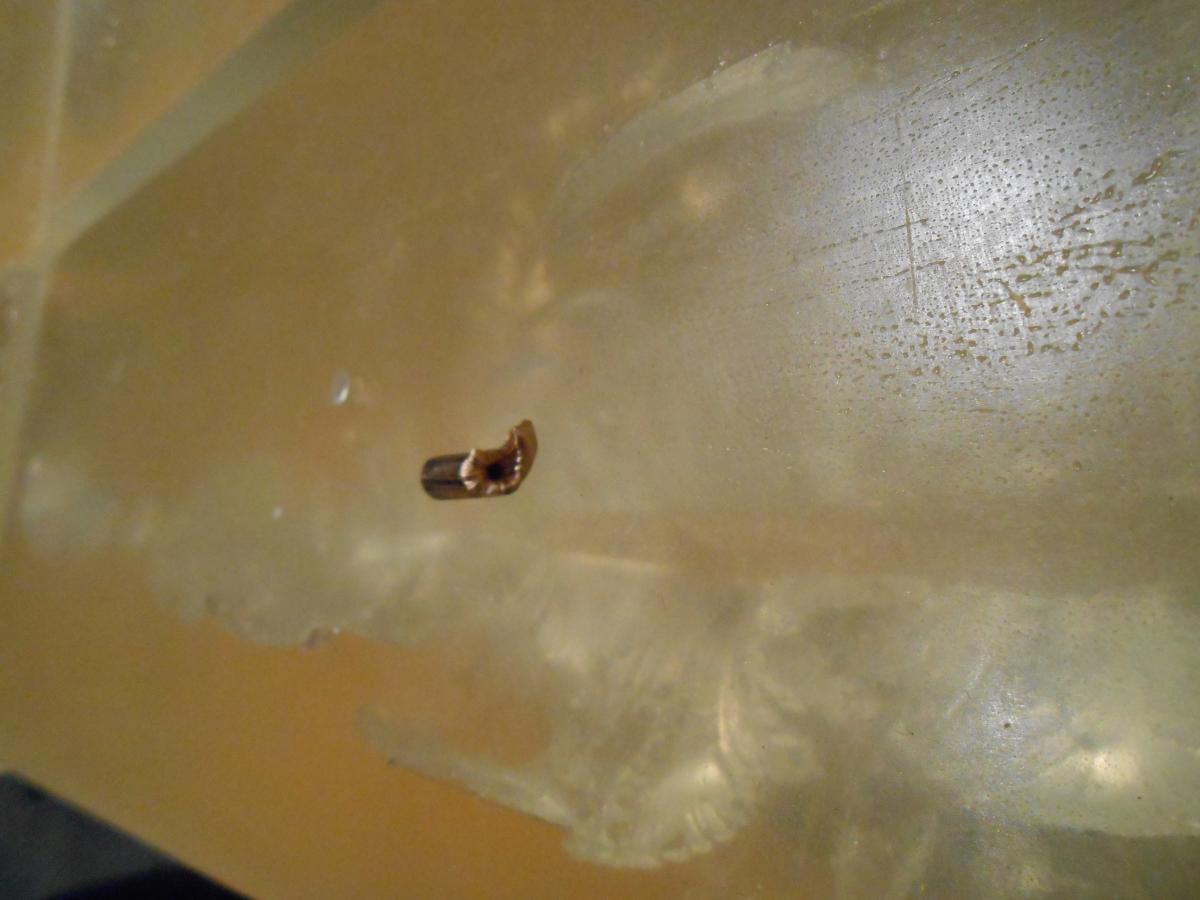
We then shot the same bullets into gelatin covered with heavy clothing (consisting of four layers of denim):
55 grain Federal Bonded SP
Penetration: 16″
Recovered Diameter (largest): .439
Recovered Weight: 49.2 grains (89% retention)
55 grain Hornady GMX HP
Penetration: 20.25″
Recovered Diameter (largest): .438
Recovered Weight: 51.7 grains (94% retention)
55 grain Speer Gold Dot HP
Penetration: 12.75″
Recovered Diameter (largest):.491
Recovered Weight: 41.8 grains (76% retention)
60 grain Hornady TAP Urban
Penetration: 9.5″
Recovered Diameter (largest): fragmented
Recovered Weight: fragmented- pieces too small to recover
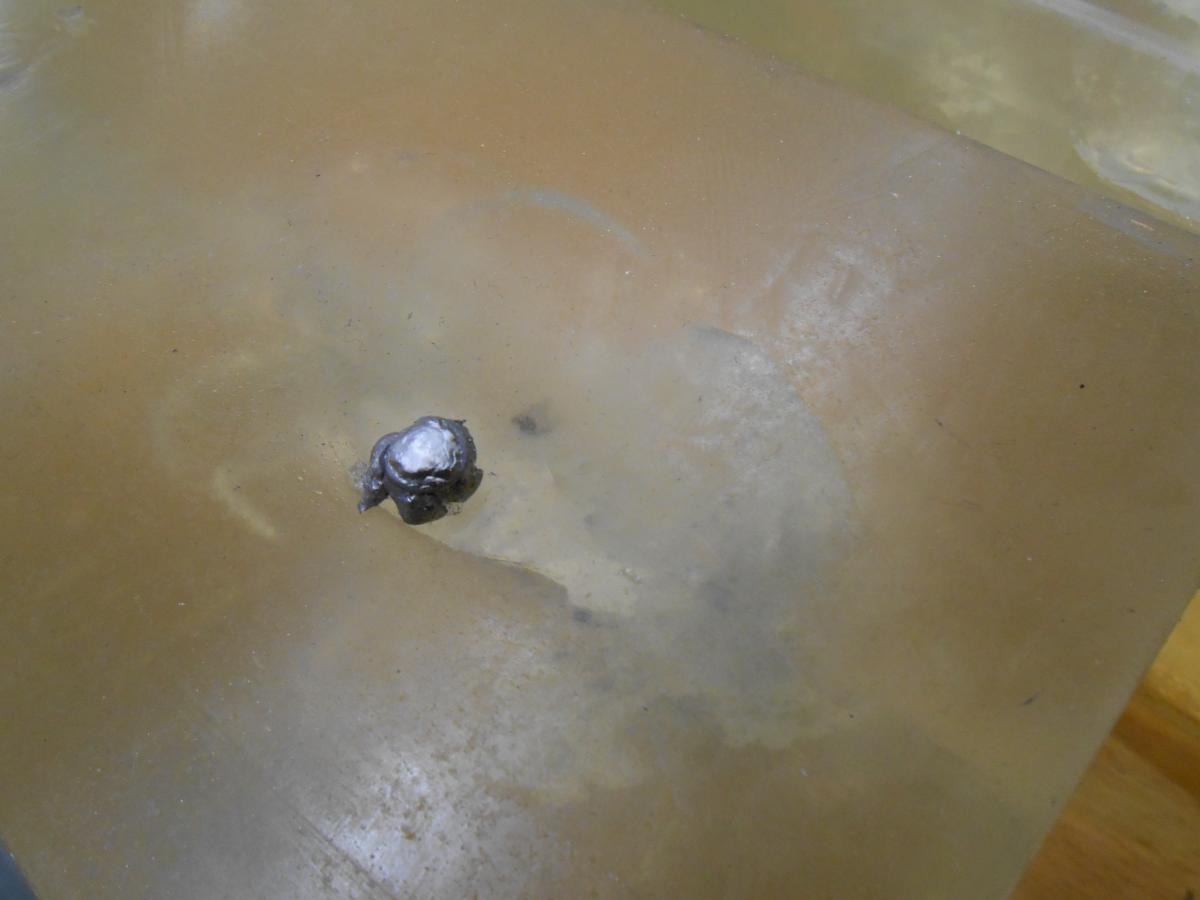 Discussion
Discussion
Both the Federal Bonded round and the Hornady GMX round performed very well. I would not feel at all hesitant about carrying either bullet. The Hornady round was the better performer against glass, having slightly better weight retention and expansion with a similar amount of penetration as compared to the Federal load.
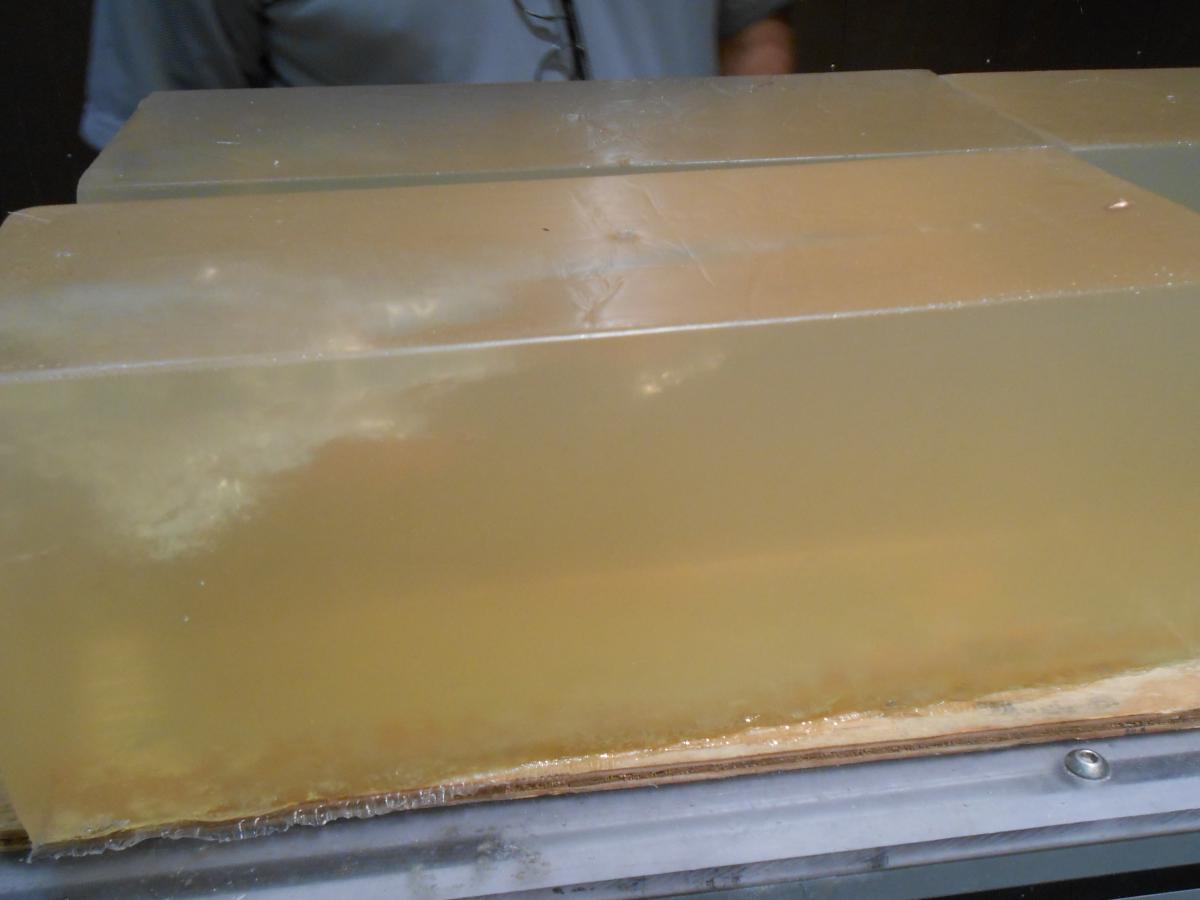
In the heavy clothing tests, I would have to say that the Federal Bonded round gave the better performance. The 20″ of penetration from the GMX bullet will worry some readers, but you must understand that penetration in gelatin is not the same as penetration in a human body. Gelatin does not contain bones, nor does it have an outer covering of elastic skin. Both of those factors limit total penetration in flesh.
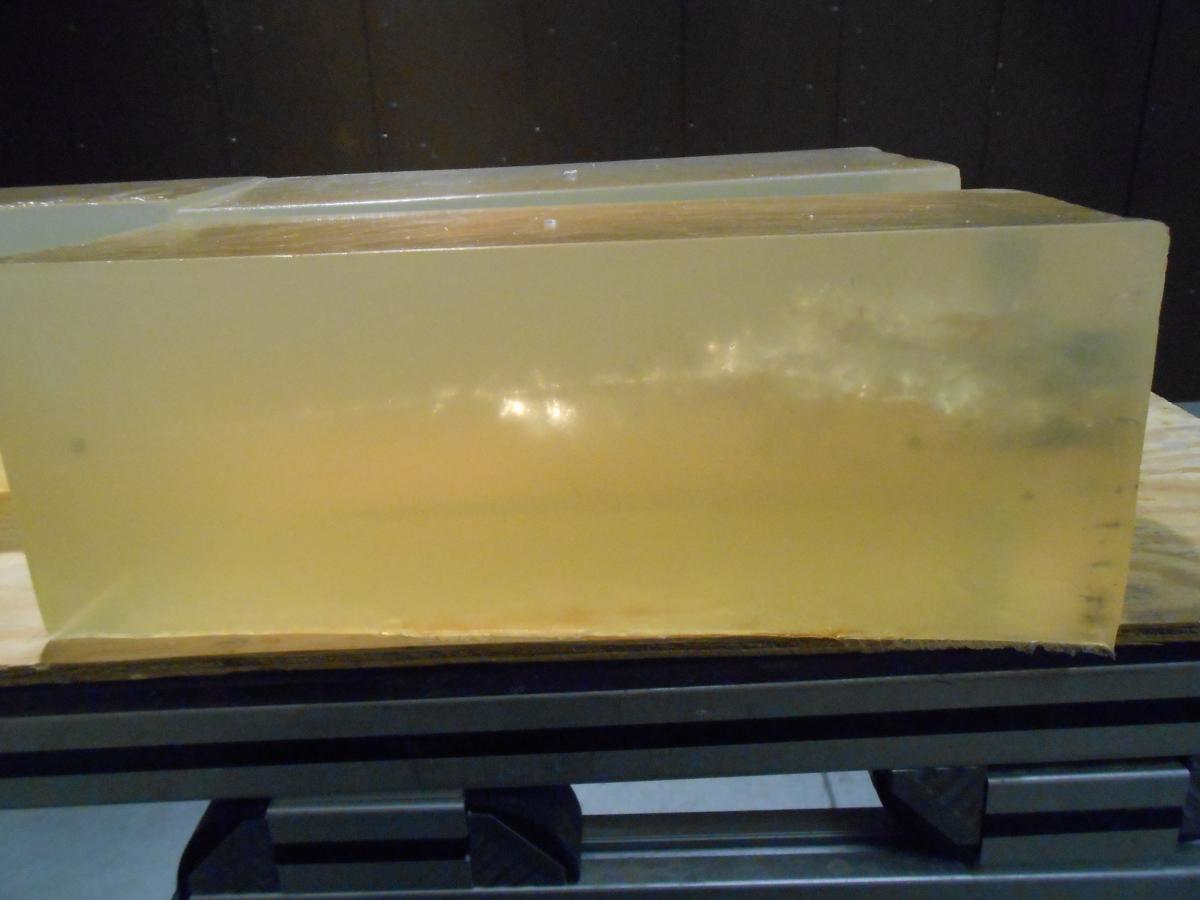
The “average” human body is about 10″ thick from front to back. The FBI believes that for optimal performance in flesh, a bullet should penetrate between 12″ and 18″ in gelatin. That penetration distance ensures that the bullet will reach the vital organs even if it must first penetrate another body part (like an arm from a side shot) before entering the chest cavity. When penetration gets beyond 18″ in gelatin, there is a greater chance for the bullet to pass through the body and strike someone else.
While pass-throughs are certainly a concern, they seldom cause serious injury in the case of hollowpoint or soft point bullets. There simply isn’t much energy remaining for the bullet to penetrate another person after the bullet is slowed by the expansion process.
FBI research also indicates that total depth of penetration is the greatest single predictor of a bullet’s “stopping power”. It’s better to have too much penetration than too little. The Federal Bonded round is clearly within the given range for “ideal” bullet performance. The GMX round penetrates a little deeper in heavy clothing than what the FBI considers ideal, but it isn’t likely to penetrate so much that it becomes a serious risk for innocent bystanders behind the suspect.
The TAP round performed exactly as designed. It fragmented very quickly and violently. Unfortunately, the 60 grain round didn’t perform significantly better than previous tests I had seen on the 55 grain TAP. The wound channel for the first few inches of penetration was devastating, but the bullet doesn’t meet the FBI’s 12″ minimum penetration guideline through either heavy clothing or auto glass. The bullet won’t over penetrate, but it also isn’t likely to penetrate deeply enough to reliably stop a determined attacker.
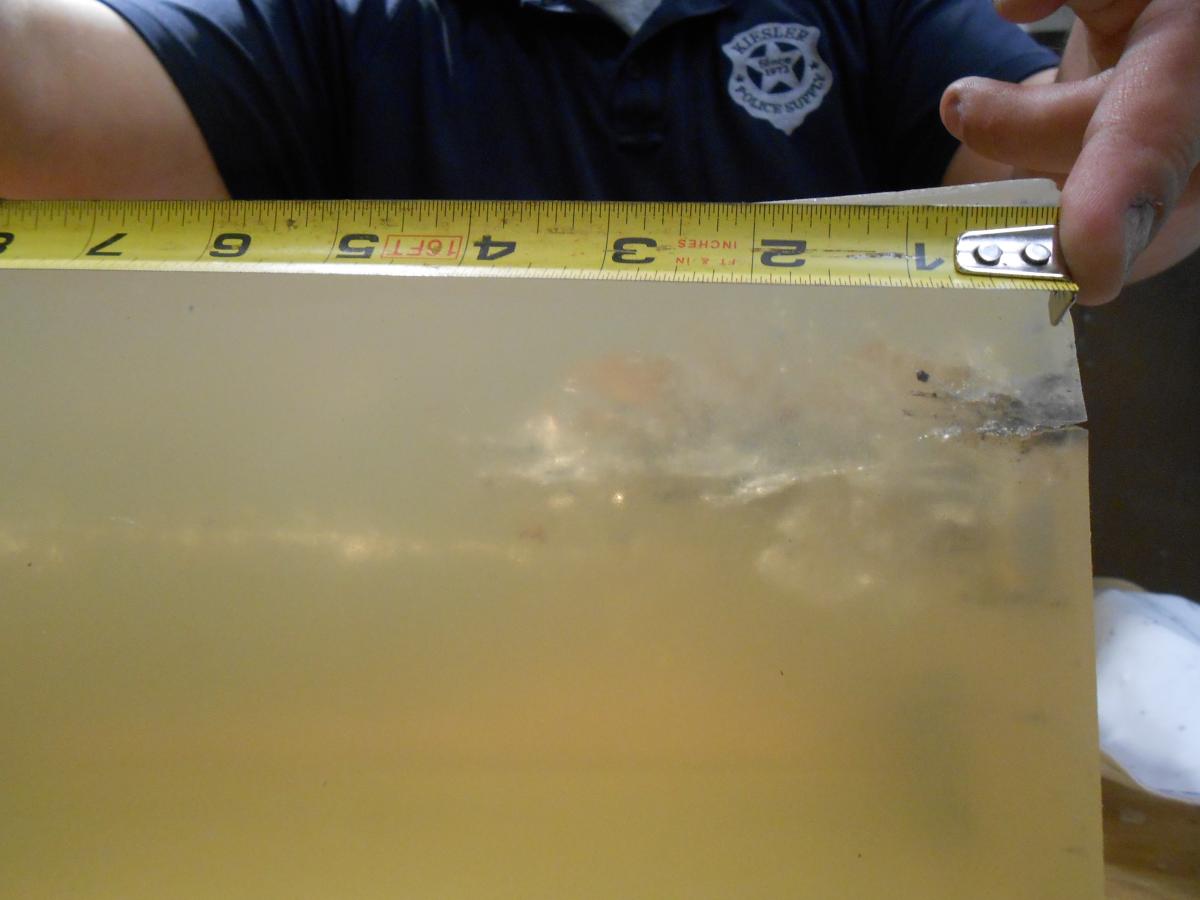
The Gold Dot hollowpoint seems to fall somewhere between that TAP rounds and the Bonded/GMX loads. Penetration and expansion were excellent through heavy clothing, but inadequate through auto glass. With that said, it was still a better performer than the TAP round. While I’m hesitant to recommend this load for general police duty use, it may serve very well as a home defense load where automobile glass isn’t likely to be encountered. It may also serve as a better alternative to the TAP rounds for agencies who are looking for enhanced performance through intermediate barriers but still have concerns about overpenetration.
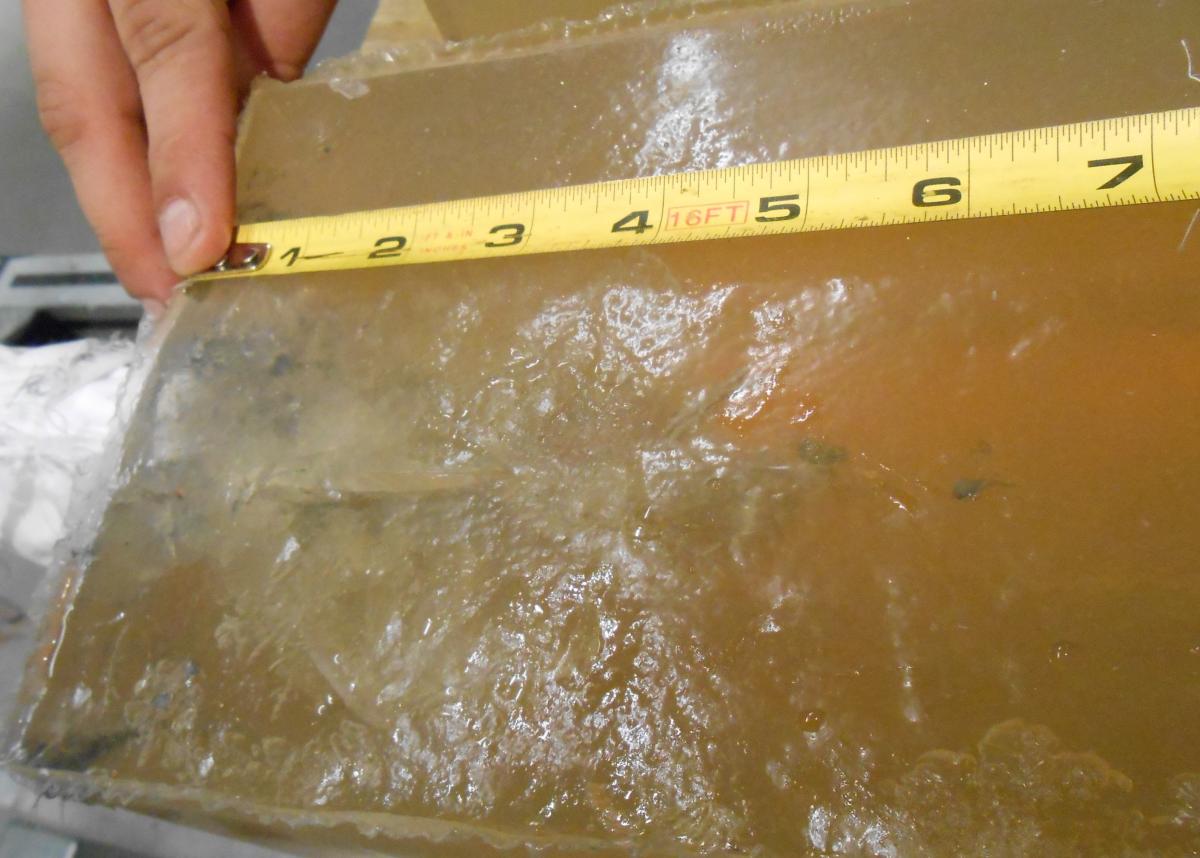
Handgun Rounds
We did a head to head comparison between Winchester’s Ranger T loads and Federal’s HST hollowpoint. We chose the HST because it most closely duplicates the Ranger’s performance profile. Both bullets are non-bonded but they perform better than most non-bonded bullets through intermediate barriers.
ATK’s other premium offering is the Speer Gold Dot bullet. This is a bonded round that has a proven track record. In general, bonded rounds expand less and penetrate more in flesh. They also perform better than non-bonded rounds when fired through glass or steel. Since bonded and non-bonded bullets have different indications and performance profiles, we thought it would be best to compare the Ranger T with the Federal HST round.
We shot both rounds in 9mm and .45acp using the same auto glass test that we used for the rifle rounds. I fired both caliber rounds through full sized Glock pistols (Models 21 and 17). Here are the results:
.45acp 230 grain Winchester Ranger T
Penetration: 13.75″
Recovered Diameter (largest): .639
Recovered Weight: 231.6 grains (100% retention)
.45acp 230 grain Federal HST
Penetration: 13″
Recovered Diameter (largest): .686
Recovered Weight: 219.1 grains (95% retention)
9mm 124 grain Winchester Ranger T
Penetration: 11″
Recovered Diameter (largest): .561
Recovered Weight: 72 grains (58% retention- bullet jacket separated from core)
9mm 147 grain Federal HST
Penetration: 10.5″
Recovered Diameter (largest): .694
Recovered Weight: 125.4 grains (85% retention)
Discussion
The Federal HST load looks very promising for both self protection and law enforcement roles. I would not have any problems carrying it. It seems to expand a little larger and penetrate slightly less than the Ranger T, but I doubt that most criminals would be able to tell the difference between the rounds. Both performed well.
I was somewhat surprised at the difference in performance between the 9mm and .45acp rounds through auto glass. Having researched the issue extensively and having written a paper on the topic, I generally don’t see too much difference in “stopping power” between 9mm and .45acp rounds as long as a quality hollowpoint round is used. With that being said, most of the shootings I see are not through automobile glass.
I generally recommend the 9mm as the best all around caliber for concealed carry licensees or off duty police officers. I still stand by that recommendation, but feel slightly more hesitant to promote the 9mm as an ideal cartridge for police officers (like highway patrolmen) who anticipate a large percentage of their shootings to be around automobiles. The .45acp is clearly a better performer through glass.
Thanks to ATK and Kiesler Police Supply for sponsoring the workshop! It was great to see how these new rounds perform.
Greg Ellifritz is a retired firearms and defensive tactics training officer for a central Ohio police department. He holds instructor or master instructor certifications in more than 75 different weapon systems, defensive tactics programs and police specialty areas. Greg has a master's degree in Public Policy and Management and is an instructor for both the Ohio Peace Officer's Training Academy and the Tactical Defense Institute.
- 1309 reads

